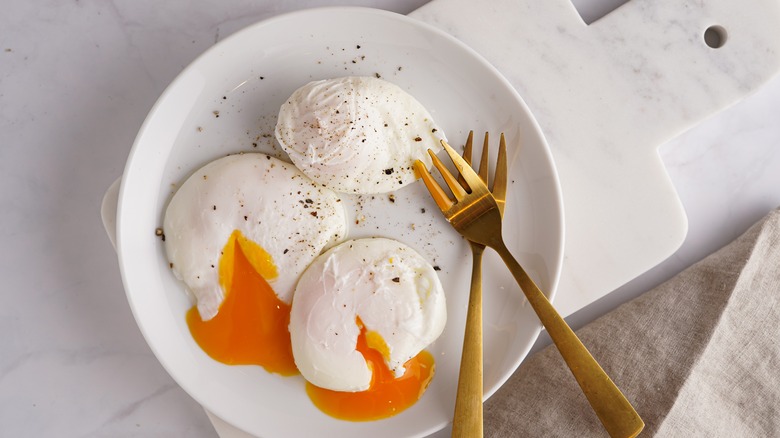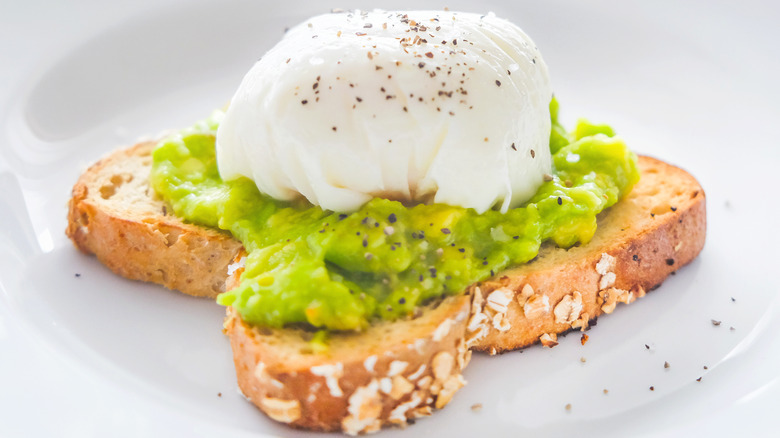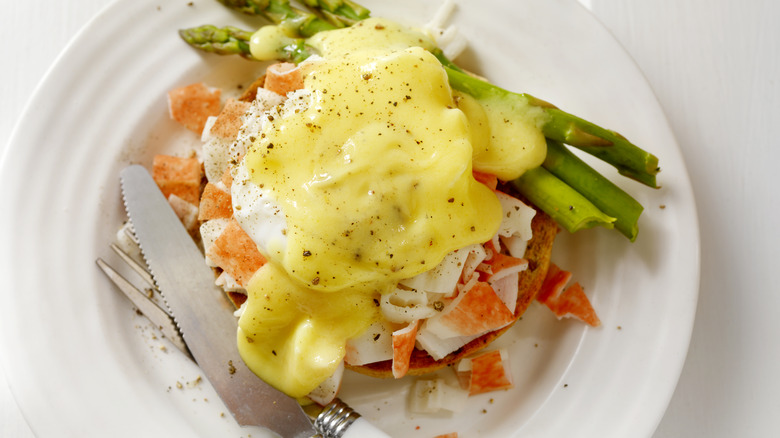How To Save And Reheat A Big Batch Of Poached Eggs
A luxurious combination of poached eggs, buttered English muffins, Canadian bacon and hollandaise sauce, eggs benedict is a universally beloved dish that serves as the undisputed king of brunch dishes. When combined with other brunch favorites such as homemade cinnamon rolls, frittatas, and crispy bacon, it forms the basis of a fabulous social gathering for any Sunday morning.
However, although delicious, eggs benedict is not an easy dish to scale without some prep work ahead of time. This is especially true for poached eggs, a core element of the dish that would take too much time to prepare fresh individually if you are having a large brunch party. Fortunately, perfectly runny poached eggs can be made in advance, and when stored in ice-cold water, you can reheat them gently in a water bath the next morning to serve, leaving you with plenty of time to entertain your guests.
Making a large batch of poached eggs
There are several ways you can make a lot of poached eggs at one time for a party. One method is to use your oven and a muffin tin. Generously butter your muffin tin so the eggs will not stick to the pan, and add a couple of tablespoons of water into each tin. Crack an egg into each muffin tin, and as the egg sinks below the water, the water forms a hot bath that "poaches" the eggs in the oven. Place the tin in an oven at 350 degrees Fahrenheit for 10 minutes, checking after 7 to ensure the eggs are not overcooked. Once they are done to your liking, you can scoop them out and place them into a container with ice and water. The ice bath would stop the eggs from further cooking. Place the container into a fridge to keep overnight.
Alternatively, you can poach a batch of eggs the traditional way using a simmering water bath. Crack the eggs one at a time into a small strainer. The strainer would separate the watery part of the egg white, leaving the rest that will not spread out in the poaching liquid. Once each egg has been strained, place them into a gently simmering water bath in a wide and deep pan. Once the eggs are cooked to your liking, place them in an ice bath as before and store them in the fridge.
Reheating poached eggs
On the day you need the poached eggs, prepare a hot water bath that is just below simmering. Place the eggs in the bath one at a time to warm up, and avoid leaving them in the hot water for too long, or else the eggs will overcook. Dry each on a paper towel before using them to build your eggs benedict for your guests.
With the poached eggs complete and your homemade hollandaise ready to go, you can consider the many variations of eggs benedict you can create. For example, for the vegetarian, you can replace the Canadian bacon with grilled vegetables or sliced avocado. Seafood, such as velvety smoked salmon, or crisp and briny poached shrimp and lobsters, can give your eggs benedict an upscale makeover. If you have any spinach on hand, you can use it to create some eggs Florentine, offering a healthier choice for your guests.



